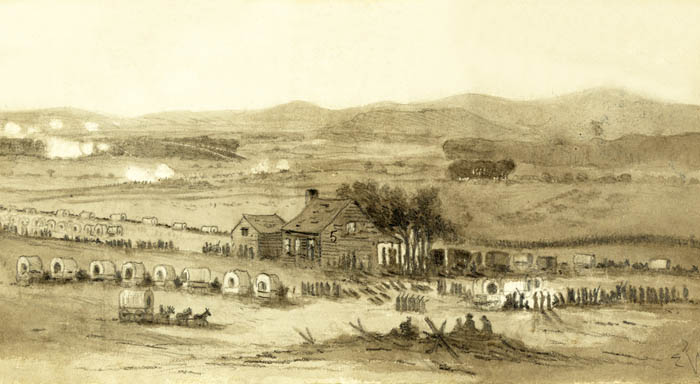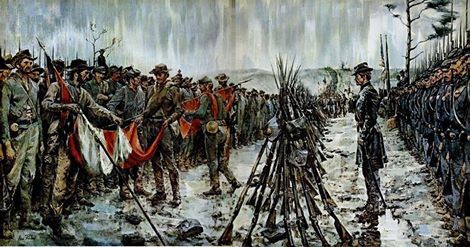
The Audacity of Lee: Unraveling the Northern Virginia Campaign
August 1862. The scorching summer sun beat down on the battle-scarred fields of Virginia, but the heat was nothing compared to the fiery ambition and desperate maneuvers that would define the next few weeks. The Confederacy, emboldened but weary after the Seven Days Battles, found itself in a precarious position. Richmond, its capital, was temporarily safe, but two Union armies loomed: George B. McClellan’s massive Army of the Potomac, still lingering on the Peninsula, and the newly formed, aggressive Army of Virginia under the boastful Major General John Pope, threatening from the north. What followed was a masterclass in strategic audacity, a campaign that would cement Robert E. Lee’s reputation as a military genius and deliver a crushing blow to Union morale, setting the stage for the war’s deadliest single day.
The Northern Virginia Campaign, often overshadowed by its immediate consequence, the Battle of Antietam, was a pivotal moment. It was a testament to daring leadership, the incredible endurance of the common soldier, and the devastating consequences of hubris.
A New Face, A New Threat: John Pope and the Army of Virginia

After McClellan’s failure to take Richmond, President Lincoln, increasingly frustrated by his general’s caution, sought a more aggressive commander. He found him in John Pope, a Western Theater general with a reputation for success at Island No. 10 and Corinth. Pope arrived in Virginia with a flourish, issuing a bombastic general order that immediately alienated his new troops and their commanders. "I have come to you from the West," he declared, "where we have always seen the backs of our enemies… Let us look before and not behind. Success and glory are in the advance, disaster and shame lurk in the rear." He famously proclaimed his "headquarters in the saddle," implying a mobility and daring that, ironically, he rarely demonstrated effectively.
Pope’s mission was clear: consolidate Union forces in Northern Virginia, protect Washington D.C., and, crucially, draw pressure away from McClellan. He began to aggressively gather supplies and push his 50,000-man army southward, initiating a campaign marked by harsh treatment of civilians and a distinct lack of strategic finesse.
Lee’s Dilemma and the Rise of "Stonewall"
For Robert E. Lee, commanding the Army of Northern Virginia, Pope represented an immediate, pressing threat. He couldn’t afford to wait for McClellan to recover or reinforce Pope. Lee, with characteristic boldness, decided to divide his army, a risky maneuver against a numerically superior foe. He dispatched Major General Thomas J. "Stonewall" Jackson with approximately 24,000 men to Gordonsville, tasked with checking Pope’s advance, while he remained with the rest of the army to keep an eye on McClellan.
Jackson, already a legend for his Shenandoah Valley Campaign, quickly moved to engage Pope’s vanguard. On August 9, at Cedar Mountain, Jackson clashed with a detachment of Pope’s army led by Major General Nathaniel P. Banks. In a fierce and chaotic engagement, Jackson’s lines were nearly broken, and he was famously seen rallying his troops with his sword, declaring, "Rally, men! Remember Winder! Where’s my brigade? Press them with the bayonet!" The Confederates eventually prevailed, inflicting heavy casualties and forcing Banks to retreat. Cedar Mountain, though a relatively small engagement, was a crucial morale booster for the Confederates and a stark warning for Pope: Lee’s lieutenants were not to be underestimated.
The Great Flank March: Jackson’s "Foot Cavalry"
By mid-August, Lee realized that McClellan was not going to move quickly to reinforce Pope. This presented a golden opportunity. He decided to concentrate his entire army against Pope. But rather than a direct frontal assault, Lee conceived a brilliant, audacious plan: Jackson would lead his corps on a sweeping, covert flank march around Pope’s right wing, aiming to get behind the Union army, cut its communications with Washington, and destroy its supply base at Manassas Junction. It was a high-stakes gamble, leaving Longstreet’s corps isolated for days, but Lee trusted Jackson implicitly. "Jackson," he famously said, "will know what to do."
On August 25, Jackson’s "foot cavalry" – some 24,000 men – began their epic march. For two days, they moved with astonishing speed and secrecy, covering over 50 miles, through dusty roads and dense woods, often without adequate food or rest. The Union army, meanwhile, remained largely oblivious to the impending danger. Pope, still



